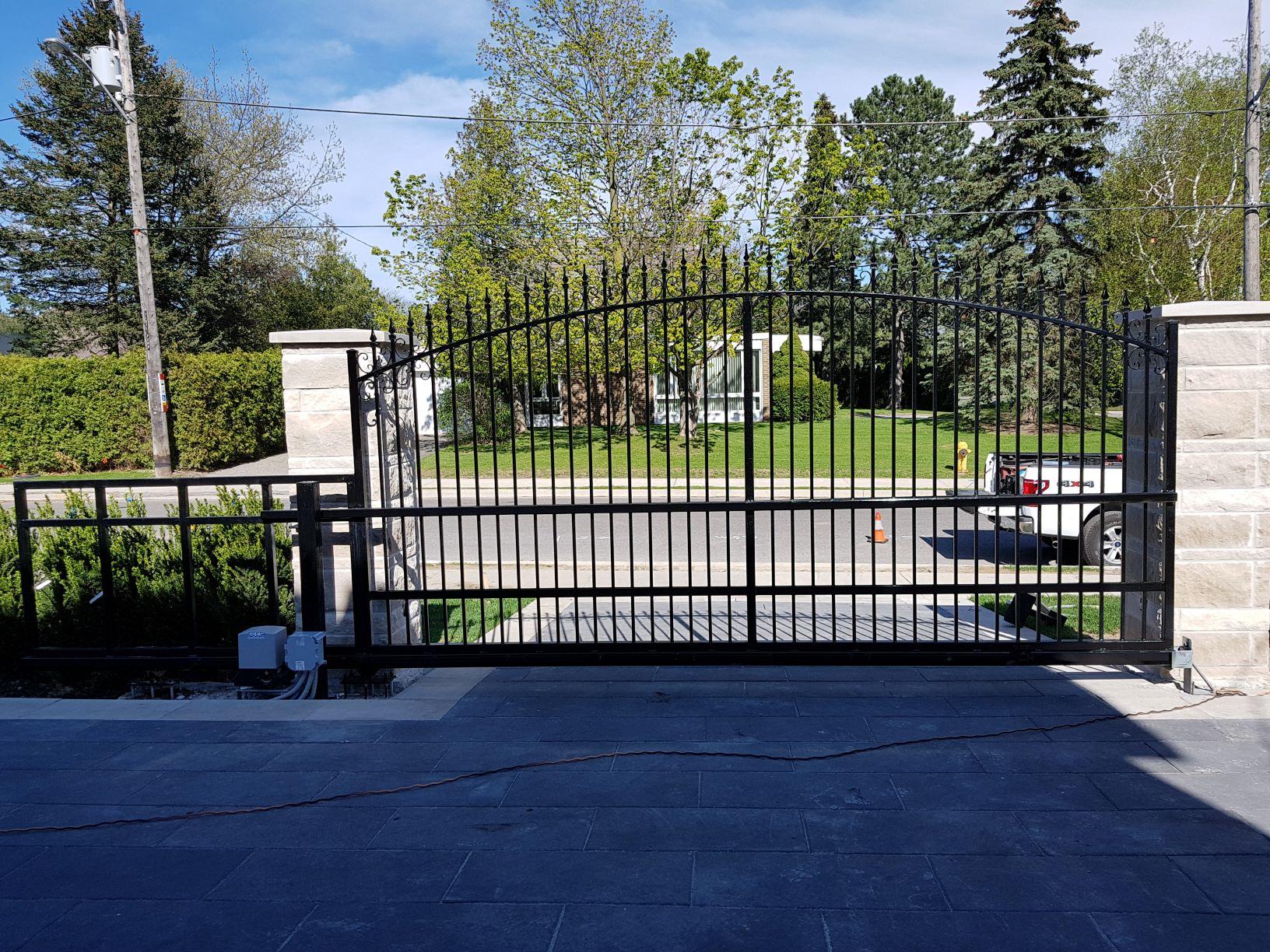Last Updated on August 20, 2025 by chanuka chanuka.23e2
Published: August 19, 2025

When choosing a gate for your home, one of the most important decisions is the type of operation—swing or sliding. For properties with narrow driveways, this choice isn’t just about aesthetics—it’s about practicality, space efficiency, and long-term performance.
In this guide, we’ll explain how swing and sliding gates work, compare their strengths in tight spaces, and help you determine which is the better fit for your driveway.
Understanding the Gate Types
Swing Gates
Swing gates open inward or outward on hinges, like a door. They’re typically mounted on gate posts and can be single-leaf (one panel) or double-leaf (two panels that meet in the center).
Sliding Gates
Sliding gates move horizontally along a track or cantilever system, parallel to your fence line. They require lateral clearance to one side of the entrance but no clearance in front or behind the gate.
Challenges of a Narrow Driveway
In a narrow driveway, every inch counts. Homeowners often deal with:
- Limited space between fence lines
- Short setback from the road to the garage or house
- Limited room for vehicles to turn or reverse
- Slopes, retaining walls, or landscaping that restrict gate movement
The goal is to install a gate that offers security and convenience—without obstructing vehicles or reducing usable space.
Swing Gates: Pros and Cons for Narrow Driveways
Pros:
- Visually traditional and elegant
- Often easier and less expensive to install
- Can be automated just like sliding gates
Cons in Narrow Driveways:
- Require a large swing radius—especially for double-leaf gates
- Reduce parking space when open
- Cannot open inward if the driveway slopes upward
- May block access if a vehicle is parked too close to the gate line
In short, swing gates can work in a narrow driveway—but only if there is sufficient front or rear clearance.
Sliding Gates: Pros and Cons for Narrow Driveways
Pros:
- Require no swing clearance—ideal for short or steep driveways
- Maximize usable space for parking and movement
- More secure against forced entry
- Operate smoothly even in tight urban or fenced-in areas
Cons:
- Require lateral space along the fence line to slide open
- Typically higher in cost due to added hardware
- Tracks may need regular cleaning if debris accumulates
In most narrow driveway scenarios—especially those with limited front-to-back space—a sliding gate is the more efficient and functional choice.
Side-by-Side Comparison
| Feature | Swing Gate | Sliding Gate |
| Needs space to open? | Yes, front or back | No (slides to the side) |
| Good for sloped driveways? | No | Yes |
| Fits tight urban spaces? | Rarely | Yes |
| Installation complexity | Simpler | More involved |
| Space-saving in narrow lots? | Poor | Excellent |
Consider Your Layout
Here’s how to choose the right gate type based on your driveway layout:
- Short driveway with little front clearance? Sliding gate
- Driveway slopes upward toward the house? Sliding gate
- Wide lot with room along the fence line? Either option
- Tight lateral space but long driveway depth? Swing gate may work
- Desire for automation and security? Both are viable—depends on space
Final Thoughts
For most narrow driveways, a sliding gate is the more practical solution. It allows you to use the full depth of your driveway, avoids clearance issues, and integrates well with automated openers. While swing gates offer a classic look, they often require more room than a tight space allows.
Still not sure which type is right for your property? Our team at Art Metal USA can help assess your site, recommend a design, and install a custom gate that delivers both form and function.

 Chat
Chat 








